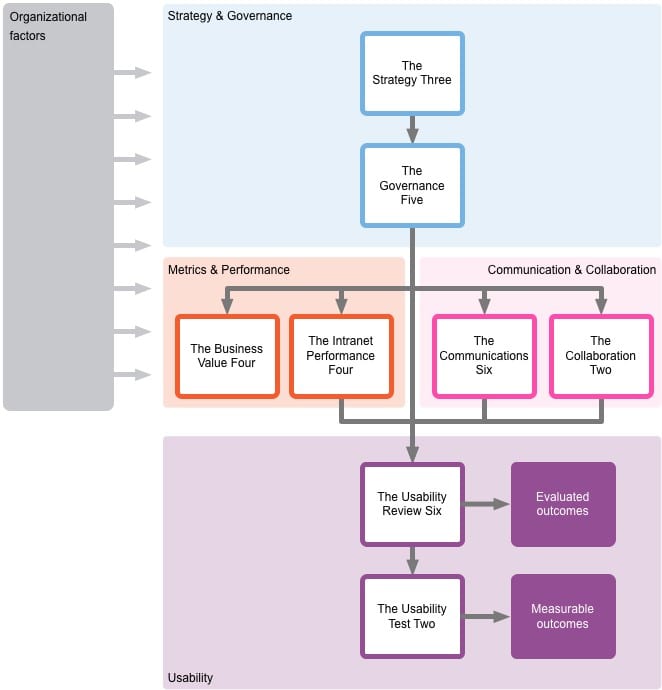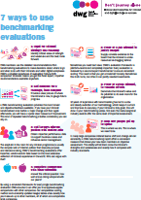What is the first step towards evidence-based intranet success?

Pssst, guess what… I know the secret of making good intranets. More than that, I’ve just gone and proved it with science and numbers. This is it. I know the secret of how to manage intranets successfully.
Usability – where it succeeds or not
So, let’s wind back a bit. You are sitting watching a user of your intranet struggle to complete a task. You are biting your lip. You are sitting on your hands. You are also blushing with embarrassment. Maybe they can’t find the right link. Maybe they can’t see the button they need. Perhaps it is right in front of their eyes, but their eyes are having none of it. These are the basics of usability.
It is in this crucial momentary interface with the audience that all of the work you have done is won or lost. There was no point building that intranet if it can’t be used. There is no point publishing information if it can’t be found. There is no engagement if the intranet isn’t trusted and doesn’t fulfil its promises. Usability, task completion and user experience are outcomes.
Intranet management – where the work is done
As an intranet professional, when you see usability problems, being the helpful and kind person that you are, you instinctively want to go and fix them – to change an image here or a link label there. My question to you is what are all the management practices you need in order to make sure, in that moment, that the right content is up there, up to date, easy to read, easy to find and the task is completed? It requires dozens of people and hundreds of processes to run smoothly for probably many years for an intranet to cut the mustard. Many fall short.
For well over 10 years DWG has been benchmarking intranets and comparing how well organizations perform against each other. We have four models that describe all these management practices:
▪ Strategy & Governance
▪ Metrics & Performance
▪ Communication & Collaboration
▪ Usability
Benchmarking our benchmarks
In our recent research “Evidence-based Intranet Success: Best practices revealed by benchmarking data analysis”, I looked at a large set of benchmarking data to see if we could prove this statistically. Do organizations with good management practices have good intranets? And do bad management practices result in bad intranets? Well d’oh! We instinctively know this, but can we prove it?
Usability benchmarking is special and different because we test empirically how effectively those practices have been carried out by asking folk to actually use the intranet for a variety of key user tasks. But if you want to ensure that an intranet has good usability, you first need to make sure all the practices that give rise to usability are in place within the organization.
I analysed Management benchmarks (Strategy & Governance, Metrics & Performance and Communication & Collaboration) from 2010 to 2014, comprising 105 benchmarks from 56 members, and Usability benchmarks from 2012 to 2014, comprising 50 benchmarks from 48 members. I ran this through a statistical analysis, in which each of the 32 metrics (8 metrics per benchmark), where valid, were compared with each other. So, what did this reveal?
Success or failure flows from strategy, through governance
We see all the aspects of intranet management as a system of interrelated practices that pass benefits between each other. Good work in one practice will be passed to another. The performance of organizations may be influenced by external factors, such as the sector they operate in, their culture or whether they have resources, but in general this model holds up. We broke down the benchmarks into areas of practices that were alike: Strategy & Governance and Communication & Collaboration into groups of their respective topics; Metrics & Performance into two halves based on judging business value and improving intranet performance; and Usability depending on whether it was based on expert evaluation or empirical user testing. This is summarized in the following diagram:

Among many other interesting findings, we found a strong causal correlation between intranet strategy and intranet governance. These are the most critical of your practices that will predict your success or failure. Have you got an intranet strategy and a functional governance model? You’re halfway there. If you haven’t got the capability to define strategy, it is unlikely you’ll be able to form an effective governance model, nor be able to give it the authority to control the diverse range of stakeholders intranet management requires. Without effective governance, you are consigned to cat herding. We also found strong causal correlation between the five key metrics we use to measure governance and the key areas in Metrics & Performance and Communication & Collaboration.
All of this flows into what the employees see on a daily basis, i.e. the outcomes we measure with the Usability benchmark evaluated against our model of best practice by an expert benchmarker, as well as those measurable outcomes we observe with user testing.
The first step
So, what’s the first step towards evidence-based intranet success? If I were to land in an organization tomorrow, no matter how much my new colleagues might want to talk about social, versions of SharePoint, mobility, colours, images and how embarrassed they were when they watched their boss trying to use the intranet and failing, I would walk up to a whiteboard, pick up a pen and write:
“Where are the intranet strategy and the governance model? What do we need to do to get them?”
And that’s not just my opinion, or “best practice”. It’s statistically proven.
Related research and resources
Categorised in: Collaboration, Internal communications, Metrics & measurement, Research reports, Strategy & governance, Usability & design


